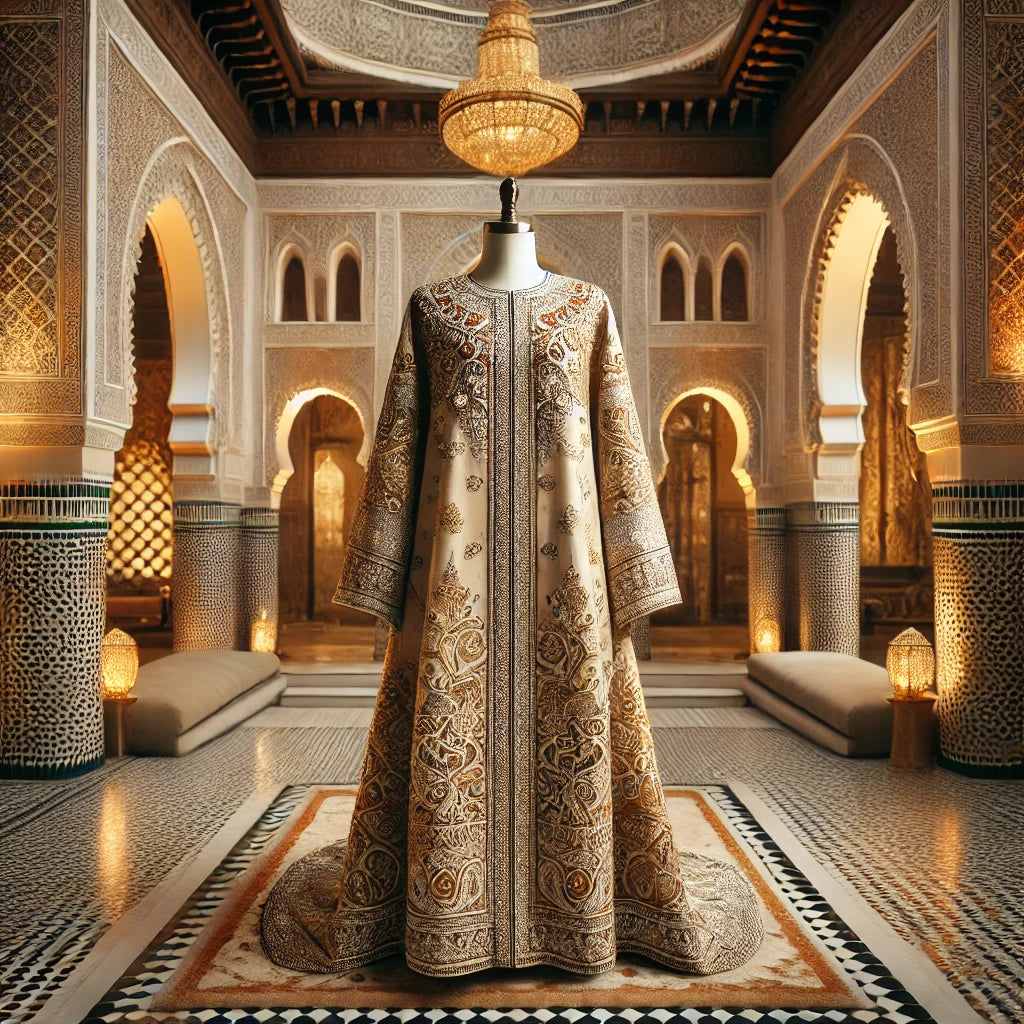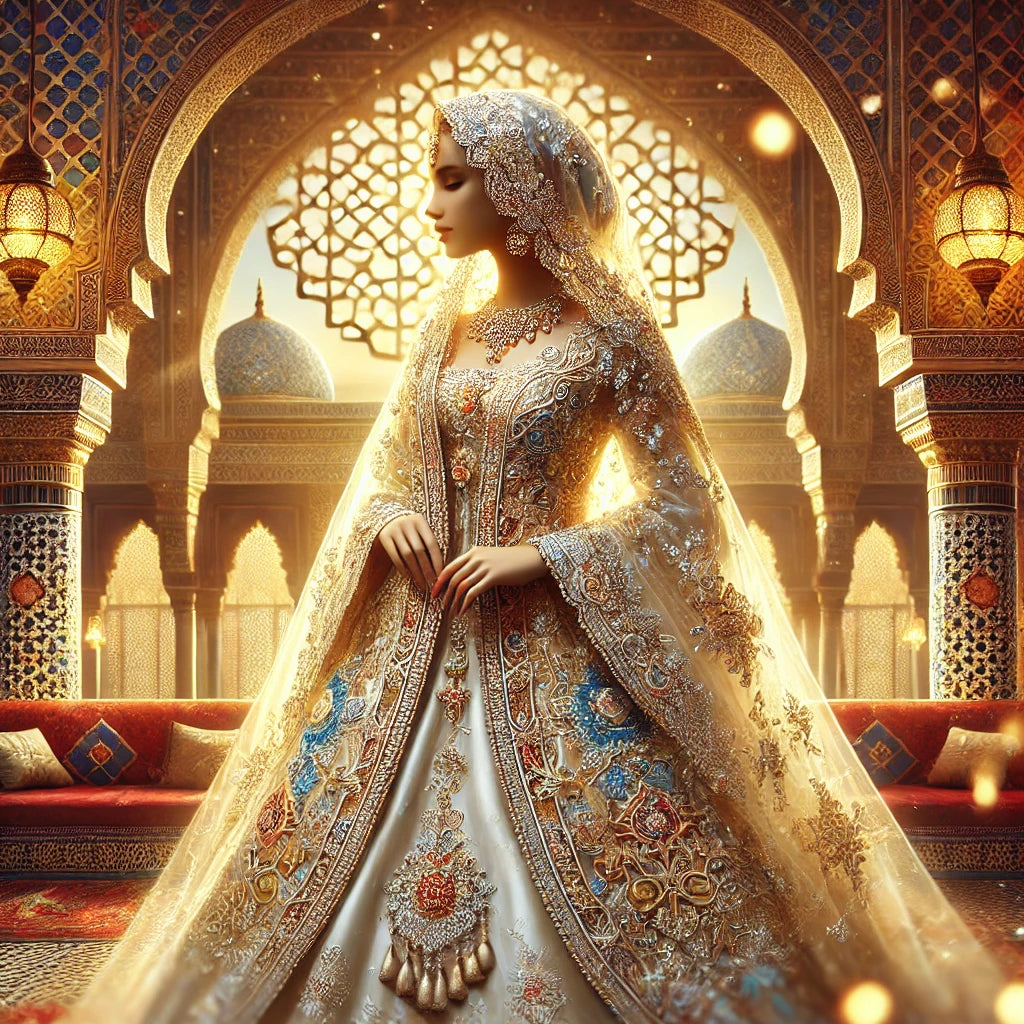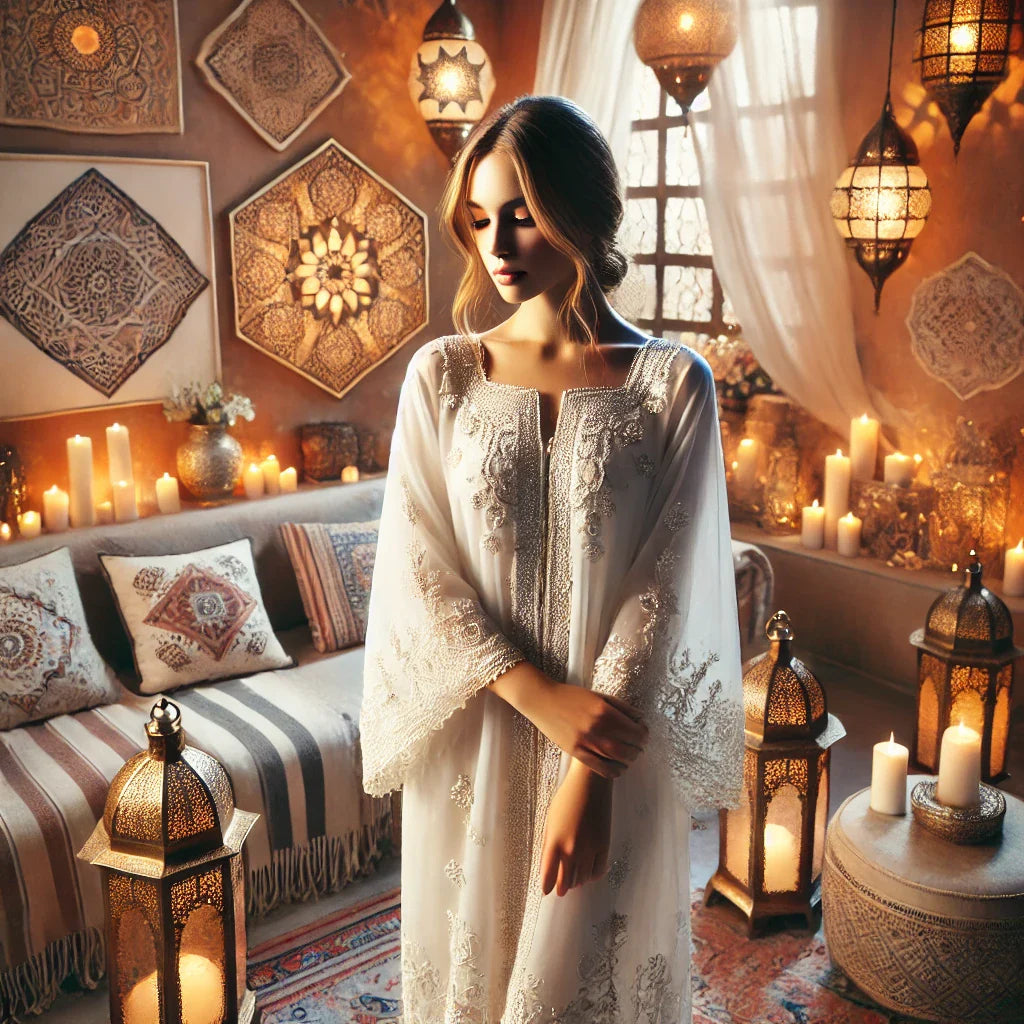
Who introduced the caftan to Morocco?
The Moroccan caftan, with its sumptuous embroidery and elegant cut, is today one of the most iconic symbols of Moroccan culture. But did you know that this traditional garment wasn't born in Morocco? Who introduced the caftan to Morocco? This question opens a captivating journey through history, where cultural exchanges and foreign influences have shaped this unique piece.
Take the example of Nadia, a Moroccan fashion designer passionate about the history of this garment. During an exhibition on cultural exchange between Andalusia and Morocco, she discovered that the caftan was introduced to Morocco in the 13th century by the Marinids, a dynasty inspired by Andalusian traditions. This garment, initially reserved for the nobility, has since won the hearts of Moroccans.
If you, like Nadia, are fascinated by this outfit that combines elegance and heritage, explore our Caftan Robe collection to find modern designs inspired by this rich history.
The origins of the caftan and its introduction to Morocco
The caftan has not always been a typically Moroccan garment. Its origins date back to faraway lands.
The oriental roots of the caftan
The caftan first appeared in the Persian Empire, where it symbolized social status. Cultural exchanges have allowed this garment to travel across time and space.
Example : During the Abbasid era, the caftan was worn by dignitaries and nobles, which influenced its adoption in other regions.
To explore modern designs inspired by this cultural richness, visit our Caftan Robe collection.
The influence of Andalusia on Morocco
Who introduced the caftan to Morocco? The Marinids, exiled from Andalusia, brought with them this majestic garment, which was quickly adopted by the Moroccan royal court.
The role of Moroccan dynasties
The Saadians and Alawites then popularized the caftan, making it a must-have during royal ceremonies.
Discover our Caftan Robe collection for pieces fit for royalty.
The Evolution of the Moroccan Caftan Through the Centuries
The caftan has evolved to become an essential outfit, adapted to the tastes and needs of different eras.
From royal clothing to traditional attire
Initially reserved for the nobility, the caftan has become more popular while retaining its prestige. Each region of Morocco has added its own touch.
The impact of trade
Luxurious fabrics such as silk and velvet, imported from Europe and the Orient, enriched the making of caftans.
Example : Amina, a bride from Marrakech, chose a gold-embroidered velvet caftan, a nod to these historical influences.
Let yourself be seduced by these inspirations in our Caftan Robe collection.
Moroccan designers and the modern caftan
Today, Moroccan designers are revisiting the caftan by blending tradition and modernity, as evidenced by the haute couture fashion shows.
Explore contemporary designs in our Caftan Robe collection.
Why the caftan remains a timeless icon
The caftan is not just a piece of clothing, it is a symbol of cultural pride.
An outfit for every occasion
The caftan is suitable for all occasions in life: weddings, religious festivals or official events.
Example : Samira wore a white and gold caftan for her son's christening ceremony, reflecting both tradition and elegance.
A national pride
Wearing a caftan is a celebration of Moroccan craftsmanship and honoring centuries of history.
An international influence
Today, the caftan transcends borders and seduces fashion enthusiasts from all over the world.
Discover models that embody this timelessness in our Caftan Robe collection.



Leave a comment
This site is protected by hCaptcha and the hCaptcha Privacy Policy and Terms of Service apply.